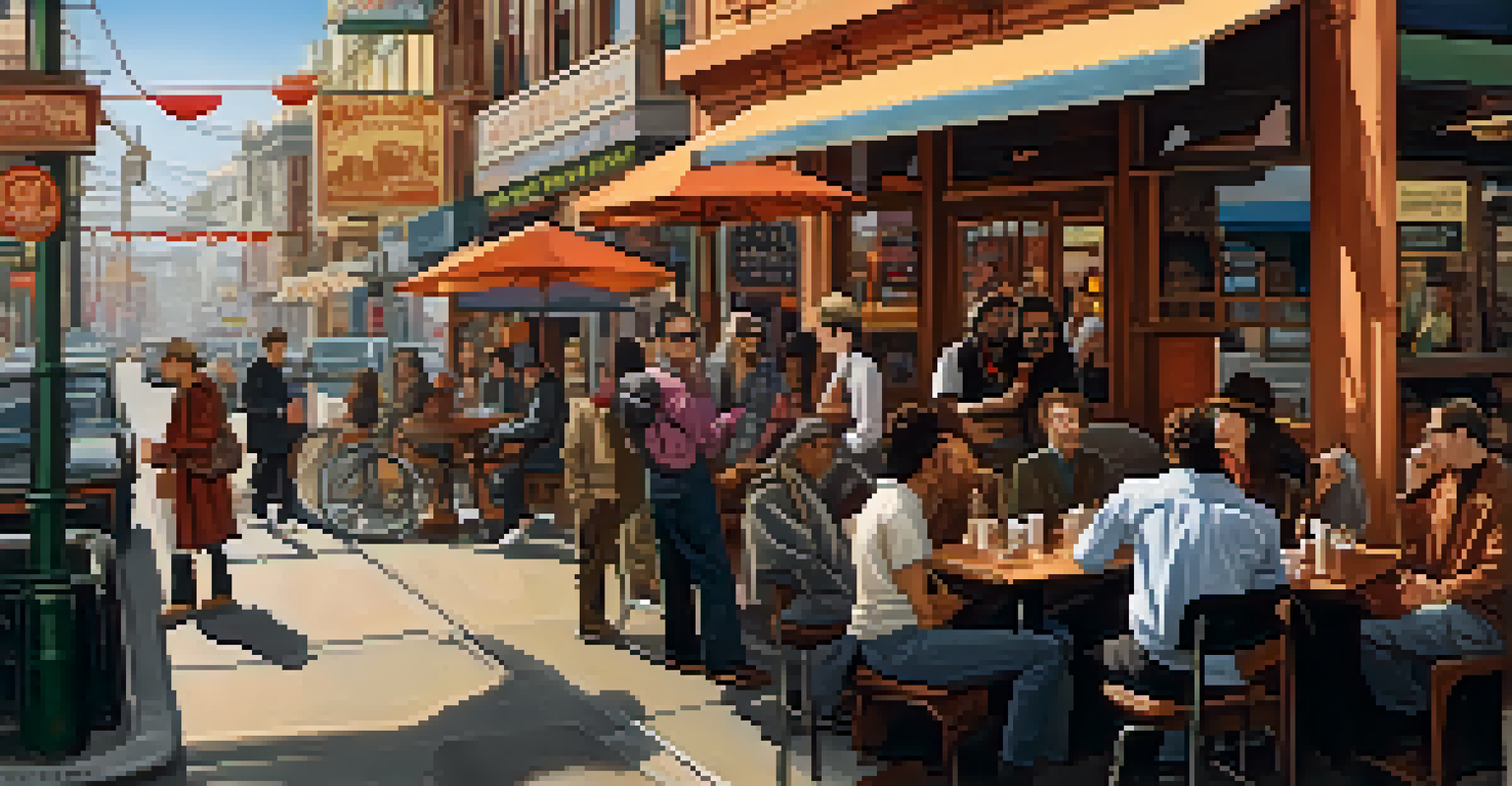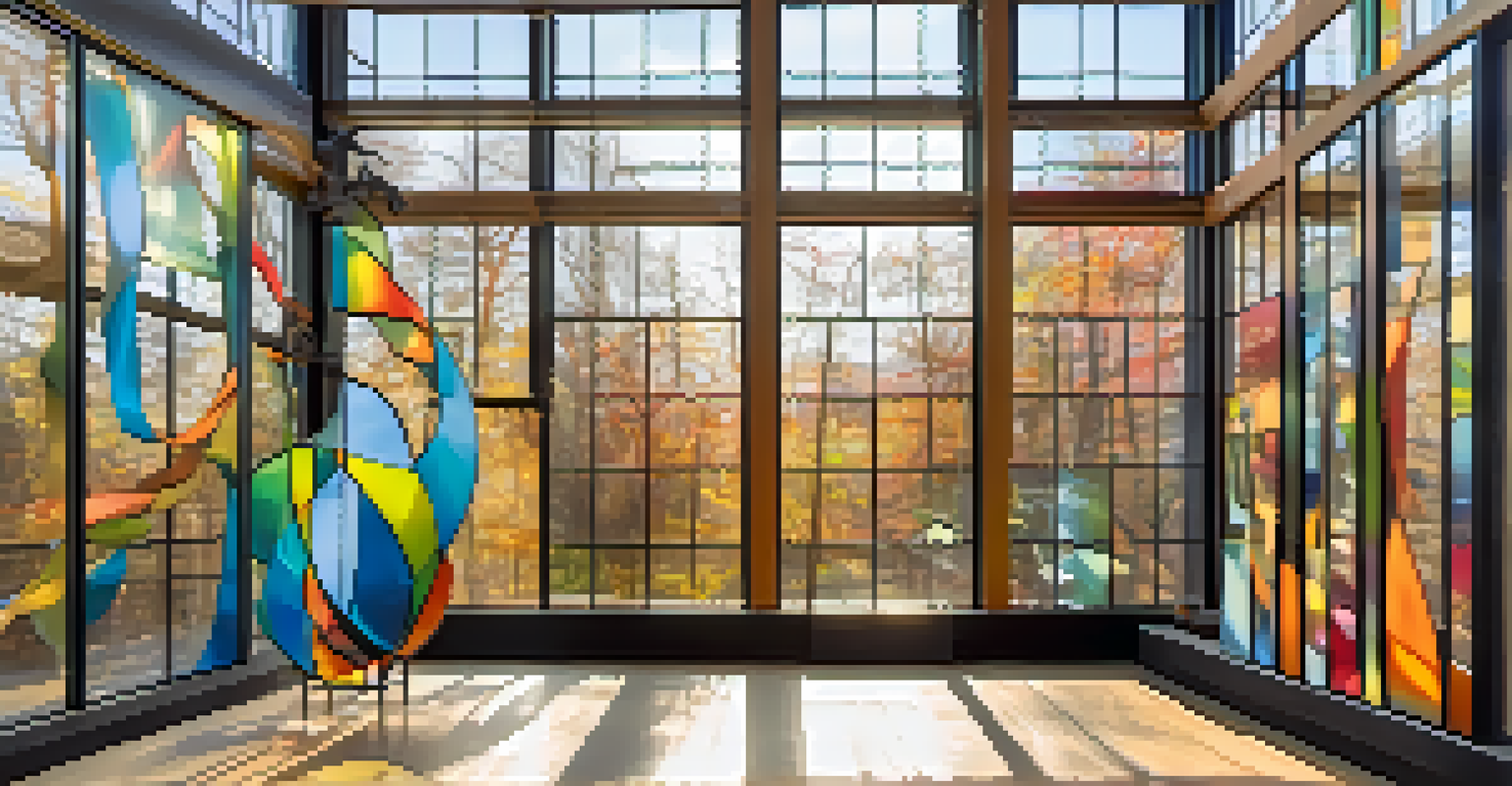The Legacy of California Artists in the 20th Century

The Birth of a Creative Hub: California in the 20th Century
In the early 20th century, California emerged as a vital center for artistic innovation. With its diverse landscapes, vibrant cultures, and burgeoning film industry, the state attracted artists from across the globe. This melting pot of ideas fostered an environment ripe for creative exploration and experimentation.
Art is the most beautiful of all lies.
The allure of California's sunny weather and stunning scenery inspired many artists to settle there, sparking a movement that would influence generations. Movements such as the California Impressionism and the birth of the Beat Generation painted a rich portrait of life on the West Coast. As artists collaborated and shared their visions, California became synonymous with artistic freedom.
By the mid-20th century, cities like San Francisco and Los Angeles were not just cultural backdrops; they were active players in shaping modern art. The unique blend of coastal lifestyle, diverse communities, and a forward-thinking mindset led to a legacy that would resonate far beyond California's borders.
The Influence of California Impressionism
California Impressionism emerged in the late 19th and early 20th centuries, characterized by its bright colors and light-filled scenes. Artists like Guy Rose and William Wendt captured the enchanting landscapes of California, focusing on the effects of light and atmosphere. Their work showcased not just the natural beauty of the state but also its unique character.

This movement distinguished itself from its European counterparts by celebrating the vibrancy of the Californian environment. The artists drew inspiration from the Pacific Coast, depicting the ocean, mountains, and flora with a fresh perspective. This local interpretation of Impressionism helped establish California as a crucial player in the art world.
California: A Creative Epicenter
In the 20th century, California became a vital hub for artistic innovation, attracting diverse talents and shaping modern art movements.
California Impressionism laid the groundwork for future movements, inspiring subsequent generations to explore new themes and techniques. Its legacy can be seen in the way contemporary artists continue to experiment with light and color, making it a lasting influence in American art history.
The Beat Generation: Art and Rebellion
The Beat Generation, which flourished in the 1950s, was a cultural revolution that intertwined poetry, music, and visual art. Artists like Allen Ginsberg and Jack Kerouac challenged societal norms, embracing spontaneity and raw expression. Their works not only resonated with the disillusionment of the era but also paved the way for future countercultural movements.
Creativity takes courage.
California's urban landscape, particularly San Francisco's North Beach, became a breeding ground for this artistic rebellion. The Beats rejected traditional artistic forms, favoring a more improvisational style that captured the essence of their experiences. This creative freedom fostered a sense of community among artists, writers, and musicians who sought to break free from convention.
The influence of the Beat Generation extended beyond literature into visual arts, inspiring artists like Robert Rauschenberg and Jasper Johns. Their bold, experimental works reflected the spirit of the era, leaving an indelible mark on the art world while encouraging future artists to embrace their individuality.
Pop Art's California Connection
In the 1960s, California became a central hub for the Pop Art movement, which celebrated popular culture and consumerism. Artists like Andy Warhol and Roy Lichtenstein gained fame for their vibrant, often ironic artworks that drew inspiration from advertising and comic strips. California's thriving entertainment industry and the rise of mass media played a significant role in shaping this artistic trend.
California artists like Ed Ruscha and Robert Indiana contributed to the Pop Art scene by infusing local culture into their works. They explored themes of consumerism, celebrity, and the American dream, creating pieces that resonated with the public. Their art reflected the changing landscape of society, where everyday objects and experiences became worthy subjects.
Feminist Art's Impact
The feminist art movement in California challenged gender norms and highlighted women's contributions, redefining their role in the art world.
This movement's impact can still be seen today, as contemporary artists continue to engage with the themes of consumer culture and mass media. Pop Art's legacy in California encourages artists to question the norms of society while celebrating the vibrant, often chaotic nature of modern life.
The Rise of Feminist Art in California
The feminist art movement gained momentum in the 1970s, with California at the forefront of this transformative wave. Artists like Judy Chicago and Miriam Schapiro used their work to challenge gender norms and highlight women's experiences. Their groundbreaking exhibitions sought to redefine the role of women in the art world, giving voice to those previously marginalized.
Through innovative installations and performances, these artists created spaces for dialogue about gender, identity, and power. Chicago's 'The Dinner Party' remains a seminal work, celebrating women's contributions to history and culture. This piece and others like it encouraged a new generation of artists to explore personal and political themes in their work.
The feminist art movement in California laid the groundwork for ongoing conversations about equality and representation in the arts. Today, artists continue to explore these themes, ensuring that the legacy of feminist art remains a vital part of California's artistic landscape.
The Role of California in Environmental Art
As concerns about the environment grew in the late 20th century, California artists began to respond through their work, giving rise to the environmental art movement. Artists like Robert Smithson and Andy Goldsworthy created site-specific installations that engaged with nature and challenged viewers to reconsider their relationship with the environment. This movement highlighted the importance of sustainability and ecological awareness.
California's diverse ecosystems provided a rich backdrop for these artists, who often used natural materials in their creations. Their works were not just art; they were also commentary on the impact of human activity on the planet. By integrating art and nature, these artists sought to evoke a sense of responsibility and connection to the earth.
Environmental Art Movement
As environmental concerns grew, California artists created works that emphasized sustainability and our relationship with nature.
The legacy of environmental art continues to inspire contemporary artists, who are increasingly focused on sustainability and ecological issues. This ongoing dialogue between art and the environment reflects California's unique position as a leader in both environmentalism and artistic innovation.
Contemporary Artists Shaping California's Future
Today, California remains a vital center for artistic innovation, with contemporary artists pushing boundaries across various mediums. From digital art to immersive installations, these creators are redefining what it means to be an artist in the 21st century. Their works often reflect the diverse cultural landscape of California, addressing social, political, and environmental issues.
Artists like Kehinde Wiley and Tauba Auerbach are gaining recognition for their fresh perspectives and innovative approaches. They blend traditional techniques with modern themes, creating art that speaks to both local and global audiences. This fusion of old and new highlights California's role as a melting pot of ideas and influences.

As California continues to evolve, its artists are at the forefront of shaping the future of art. Their commitment to experimentation and social commentary ensures that the legacy of 20th-century California artists will live on, inspiring future generations to explore and express their unique visions.